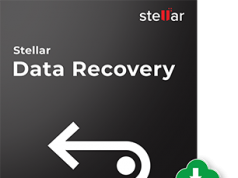Your data is worth something. Not just money (though it is almost definitely regularly sold on legal and illicit data markets alike), but something intangible – it’s a little part of your identity. As a result, it is incredibly important that you treat it with the care it deserves. To understand how, look no further than the private sector, which has evolved a stringent and rigorous data loss protection philosophy due to strict laws on data protection and the growing risk of insider threats.
Data loss protection, or DLP, involves undertaking some best practices in your everyday online and digital life. These aren’t too difficult but can be the difference between a hacker being able to steal everything from you and you being adequately protected to only frustrate malicious cyber-attackers. The private sector has many of these best practices (click here for Proofpoint’s great explainer), some of which can be very relevant to your personal computing activities:
Know the Value of Critical Data
When you search Google for, say, spandex suppliers in Paris, Texas, you are giving away data to Google. The datum, in particular, is that you are interested in finding more information about companies selling spandex in Paris, Texas. Is this critical data? Not really, and one might argue that if you went above and beyond to protect that little datum, you might be wasting your time.
That’s not the case with passwords, answers to security questions, credit card info, and more. You should work out what data is critical and sensitive to you and would cause the most trouble if it were stolen. When you know the data you should protect, your job gets a lot easier.
Understand When That Data Is At Risk
That data won’t be at risk the whole time, but whenever you put sensitive information into a website, email, or payment gateway, that information is at risk. It would help if you did what companies do and simply learn more about how data can be stolen. Typically, the highest risk data is at endpoints – when that data is being transferred instead of stored. Having an awareness of when your data is at risk will allow you to take proper precautions.
Monitor Data
This might be a little difficult if you are a computer novice, but data can and should be monitored. When you’re a big company with an IT department, it’s easier to monitor your data, but it can be harder when you just have a personal computer. Where do you start? Well, if you aren’t a particularly techy person, the best place to start is probably by using a password exposure app. Firefox Lockwise is a good example of this – it can be used as a password manager and also scours the web for data breaches. If it finds your saved logins being exposed in a data breach, it will inform you and prompt you to change your password. Simply monitoring if your data has been exposed is a great way to protect yourself from being hacked through a recycled password.
Follow Technoroll for more!





